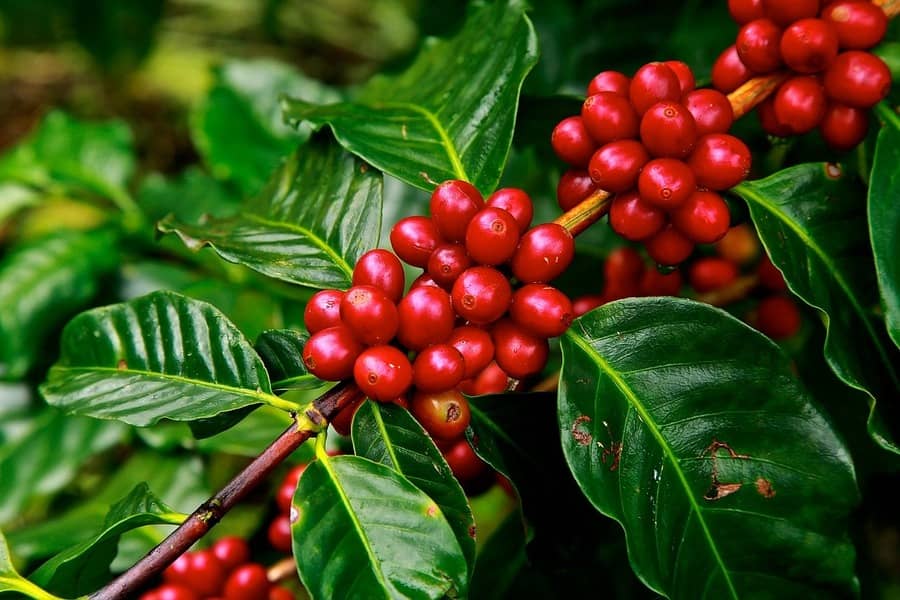The price surge ended up unlocking business, despite the exchange rate agitation. On FOB port of Santos, wider differentials ended up attracting the interest of buyers. Goods and fine coffee trades were reported, in addition to a good flow of grinders and Rio cups. The agitation in the port is a reflection of the internal interest of sellers, who seek to take advantage of the rise in prices to improve their sales positions.
Good cup in the south of Minas Gerais is priced at BRL 1,125 per 60-kg bag (USD 223 per bag). The market resumed a level above that of the same period last year, when it was indicated at around BRL 1,065 per bag. In this sense, it converges toward the level reached in 2022, when the market reflected the frost and drought of 2021. The fact is that a good cup from the south of Minas Gerais is advancing strongly into a range favorable to sellers by increasing the positive distance from the deflated 5-year average (month of April at BRL 892 per bag). The surprising rise in arabica prices ended up attracting the interest of growers, which brought more activity to trading centers in the south of Minas.
The flow of business with the new crop did not keep up with the intensity of sales in the physical market. The justification is that the sales base for the new crop is below the price in the physicals. The idea for delivery and payment in Sep/24 is around BRL 1,105 to BRL 1,115 (USD 219 per bag). The market continues to be inverted on the NY stock exchange, with the Sep/24 expiration priced below the spot position, which ends up resulting in lower pricing for new-crop coffees. In any case, in recent weeks there has been more interest among growers in sales of Brazil’s 2024 crop, providing more liquidity for deals in advance.
The fact is that, even without following the physical price, the offers for the new crop support a price level of around BRL 200 per bag above the average reference for the month of September (BRL 906 per bag, deflated), which strengthens the good selling moment. Furthermore, the recent rally also helped to unlock business for Brazil’s 2025 crop, which had not been busy for a long time. Indications for good cup from the south of Minas Gerais at BRL 1,115/1125 for liquidation in Sep/25.
This is a very interesting moment for growers to close positions and slowly stagger sales. For those who want to bet on the continuation of the upward move or even Brazil’s winter, which promises to be riskier this year, there is the alternative of setting forward positions and financial operations to participate in the rise, using option structures such as call spreads.
Rio coffee in the Matas de Minas region approaches the level of BRL 1,000 per bag, changing hands at BRL 990 per bag. The very high price of conillon ends up attracting interest in the weaker arabica cups, both by the local industry and exporters. The increase in business with grinders also fits into this movement. Newly-reaped coffees, with a high percentage of green beans and defects, have also been well received.
Conillon above BRL 1,000 per bag
Conillon follows robusta’s jump in London and accentuates the upward trend in the domestic market. Exporter interest reinforces external bullish signs. Furthermore, concern is also growing about Brazil’s 2024 conillon crop, which may be lower than expected and arrive a little later than expected. Thus, conillon 7/8 in Colatina, Espírito Santo, is pegged at BRL 1,025 for conillon type 7. The market is very stretched given the scarcity of supply. The rain in recent weeks has hampered the start of the harvest and delayed the arrival of new coffee in the market, which contributes to rising prices. In any case, growers understand the good moment and showed up more often on the market, but the very high price drives away domestic interest, with sales being liquidated only in exports.
The domestic industry continues to work from hand to mouth, moving further away from conillon every day and showing concern about the recent rise in arabica prices. The price difference between conillon 7/8 in Colatina and hard arabica with 600 defects in Minas Gerais has risen to BRL 35 per bag, which makes the purchase unfeasible. Local roasted and ground industry only buys conillon/robusta out of necessity (to improve the powder color). The idea is that the current blend comprises between 80% and 90% of arabica. Some Rio cups with more defects are sold in Minas Gerais at around BRL 915 to BRL 920 per bag, which further justifies the concentration of purchases in arabica.
The advance of the coffee harvest in Brazil tends to calm demand and bring a negative effect on prices, especially with the arrival of more arabica coffee in the market. Brazilian conillon export expectations remain high, especially at the beginning of the new season, to meet global needs, which should alleviate the seasonal effect.

